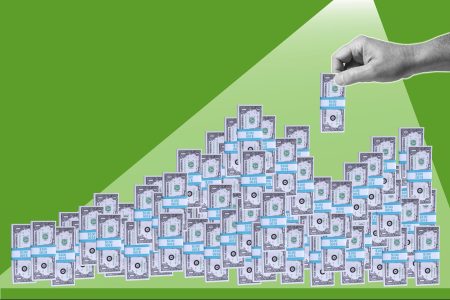- Businesses often struggle to deliver a focused message that resonates with each unique customer.
- Dividing the audience into segments helps personalize every customer journey through differentiated messaging.
- Market differentiation targets the right consumers with the right messages to elevate your brand position.
- This article is for small business owners and marketing professionals who want to acquire new customers and improve brand loyalty with customer segmentation.
Your business serves a wide range of customers with unique interests and needs. One message will not appeal to everyone, but businesses can’t personalize marketing campaigns for each customer. Instead, marketers group their customers into segments. Customer segmentation allows businesses to prioritize and engage with their most important customers through marketing differentiation.
Editor’s note: Looking for the right email marketing software for your business? Fill out the below questionnaire to have our vendor partners contact you about your needs.
What is customer segmentation?
Customer segmentation is the division of an audience into targeted groups with shared buying characteristics. Each customer segment purchases your product to fulfill the same needs and often communicates through similar channels. Their purchase drivers shape product, sales and marketing decisions.
Personalizing your message to target groups can significantly affect your bottom line. McKinsey & Company’s Next in Personalization 2021 Report found that 76 percent of customers are more likely to consider purchasing from a business that personalizes, and 78 percent are more likely to make repeat purchases. Moreover, the report found that 76 percent of consumers are frustrated when messages aren’t personalized. And, according to the Twilio Segment State of Personalization 2021 Report, 45 percent of those disappointed customers will spend their money elsewhere.
Segments give context to a customer base, and that context explains how audience segments can best be engaged. Customer segments can be:
- Binary and wide: For example, you can divide customers who are subscribed to an email newsletter and those who are not. Whether or not a customer is subscribed to your newsletter can indicate a communication disconnect.
- Focused and narrow: For example, you can split up single and married subscribers. Perhaps unmarried subscribers are likely to make multiple purchases, but married subscribers rarely complete a second digital transaction. That data would suggest that a new strategy might better convert married subscribers.
Michael Solomon, professor of marketing at Saint Joseph’s University and author of The New Chameleons: How to Connect with Consumers Who Defy Categorization, suggests current marketing trends are adapting to search for narrower, more accurate segments.
“When you think about media, with the exception of the Super Bowl and Olympics, you’ll never have a huge number of people tuning in to the same thing,” Solomon explained. “Consumers don’t really want to be hemmed in to these categories anymore.”
Ideally, your marketing team creates a plan that optimizes customer engagement for every individual as their own segment. The best plans pinpoint your best customers and personalize their customer journeys as much as possible.
“You have to choose your sweet spot if you’re a small business and really figure out who is your ideal customer,” Solomon advised.
Customer segmentation affects product development, sales plans and marketing strategies. It helps you reach and engage consumers, increasing your marketing return on investment (ROI) and earning you greater market share.
Why should you segment your customers?
Proper customer segmentation increases revenue through differentiation, according to Steffen Schebesta, CEO North America and vice president of corporate development at Brevo.
“Segmentation and personalization go hand in hand,” Schebesta explained. “You want to make sure you create segments that are relevant and actually different from one another.”
Businesses that tailor their offerings to customer segments generate, on average, 10 percent to 15 percent higher revenue than those that fail to personalize their messaging, according to the McKinsey & Company report – a rate that goes up to 25 percent for direct-to-consumer brands.
Segments identify the best customers and where they are most accessible, and they can always scale in scope as your business grows. Segmenting can help you connect to your target customers in various ways that affect marketing, sales, product development and customer service.
- Segmentation and messaging: A focused message is not static. It retains your brand voice while resonating with different customers. Ideal market differentiation stands out because only your business can deliver that exact message to a customer. Additionally, customer segments inform which marketing channels should be prioritized for each group. For example, specific customer segments may never see an email but will always engage with your Facebook business page. Segments that engage with one channel may be driven to purchase a specific color, signaling that channel-specific marketing should highlight that color.
- Segmentation and product development: Product development teams can tailor the product to better suit customer desires. If their most profitable segment purchases for one feature, the product development team can enhance or prioritize that feature to expand its largest revenue market.
- Segmentation and lead qualification: Some segments don’t provide enough revenue to offset their required resource investment. Sales and marketing teams can shift their focus to more profitable sectors by qualifying leads that will spend more and segmenting them, cutting back on costs and increasing profit.
- Segmentation and new customer discovery: Research might offer surprising results. A feature that was an afterthought for you might be the largest purchase factor across several segments. New segments may emerge as loyal customers who were not the product’s intended audience, potentially redirecting your entire business in a more profitable direction.
- Segmentation and experimentation: Experimenting with different strategies could drive away customers – or generate record revenue. For example, friendlier email subject lines could improve email open rates or drive recipients to the “unsubscribe” button. Instead of taking risks across your entire audience, implement changes across smaller segments. A sweeping overhaul will rarely succeed everywhere, but improvements in multiple segments will enhance overall efficiency.
- Segmentation and precise forecasting: Studying your target audience lets you and your other analysts better forecast upcoming business trends. This enables more precise planning that wouldn’t have been possible without research-backed confidence.
- Segmentation and customer loyalty: Your customer service team can leverage a deeper understanding of your customers to assist with their specific pain points. Improving the customer experience will build customer loyalty and overall customer satisfaction.
To earn seriously loyal customers, train your team to provide customer service like a luxury brand.
What are the types of customer segmentation?
All customer segments can be categorized by answering basic questions about your target consumer. These are any audience’s guiding factors: who, what, when, where and why.
Who: Demographic (B2C) / Firmographic (B2B)
Demographics provide basic customer identifiers – simple snapshots of a consumer through their individual, factual attributes. Although not the sole indicator of buying interest, demographics are the foundational segmentations you will always use. They identify your customer base in the broadest sense. Common demographic attributes include occupation, age, gender, income, ethnicity and education level.
Companies specializing in B2B sales replace individual demographics with company firmographics. Firmographic data covers the same concept – the core attributes of a company, such as its industry, number of employees and revenue.
Where: Geographic
Geography is sometimes considered a demographic component. However, experts often analyze it separately because of its many subdivisions. Every business will be limited in the geography it can serve, but location can often lead to unique products that could not exist elsewhere.
Climate and local customs govern what products consumers need, and seasonal changes can inspire sales and special opportunities. Federal laws and responses to public threats such as COVID-19 can also alter buying habits and consumer practices.
Understanding local and state business regulations is crucial when doing business in multiple regions.
What and when: Behavioral
Behavioral segments define what customers do with your product and when they use or read about it. Here are some examples of behavioral segmentation areas:
- Audience engagement: Marketers are especially interested in what a customer is doing when they see an advertisement and how they interact with a brand. They track audience engagement across multiple marketing channels and social media interactions. Several subdivisions dive further into specific patterns.
- Transactional behavior: Transactional behavior measures what a customer purchases and where that purchase occurs. Loyalty programs and customer feedback measure repeat purchase drivers. Marketers evaluate these transactional behaviors to determine where different audience segments communicate with the brand; for example, in-person, online or on social media.
- Online behavior: Technologic segments track customers’ behavior when they use online platforms. Website analytics can track website visitors and report how long a customer spends on your website, when they access it, if they are a new or first-time visitor, and if any other website serves as a referral agent.
All behavioral segments provide a more complete picture of the customer journey. Whether or not a consumer makes a purchase, this information can help you tailor your brand’s message and product to align with consumers’ expectations.
Use Google Analytics for a free and easy way to get started tracking how and when customers interact with your website.
Why: Psychographic
Behavioral segments prompt more questions than they answer. Psychographic segments attempt to answer the “why” behind those questions.
All other segment data is rooted in fact, outlining your buyer persona. Emotion and feeling define psychographics and provide the color to that image, allowing your business to inject personality into its messaging.
Psychographics consider a consumer’s lifestyle and the values and opinions that inform their decisions. They personalize the data you gather, allowing you to connect your brand with the people in your audience, not just their statistics.
How to define your customer segments
One of the most challenging elements of customer segmentation is selecting the data that will create the most valuable segments. Marketers research segments through questions, which often stem from your overall marketing plan. Certain strategies will help you focus those questions and ensure the effectiveness of your segmentation process.
1. Perform a product analysis.
Assess your product. Define its function, target audience and unique selling points. You should already have an idea of who will purchase it and why, but a more detailed analysis will provide more specific segments. Consider a SWOT analysis to fully explore your market share and branding opportunities.
Solomon suggests using the market as an impetus for creating a product. “Identify an unmet need that people you can reach [have], and then work backward to develop the offering that’s going to fit their needs,” Solomon advised.
2. Craft your buyer persona.
Your ideal customer can’t be everyone. Create a buyer persona with as many specifics as possible to guide your segmentation questions. Do any groups among your audience already fit its description? Reconsider your product’s purpose and messaging if the original persona doesn’t represent your customer segments.
Supplement your buyer persona with additional targets. Ask questions and write several hypotheses. Who else benefits from your product? On what social media pages do most customers see your product? Which channels provide the highest engagement rates? Use the variables to guide the data you collect and the segments you expect to develop.
3. Collect market data.
Leverage the primary customer segment types to create detailed customer profiles. Combine public records and general research with customer profiles and purchasing information you already have to compare demographics and geography. Conduct customer surveys, focus groups and interviews to ascertain behavioral and psychographic data.
According to the Twilio Segment report, 7 out of 10 consumers are OK with their information being used for personalized, targeted marketing as long as businesses collect data, not purchase it.
4. Compile segments.
Compile your data into segments. The original hypotheses should serve as a guide to finding relevant differentiating factors. Segments should be organized by buying characteristics – the drivers that most influence a sale among those groups – and actionable elements you can incorporate into your marketing plan.
Start broad and avoid too narrow of an initial focus. You can focus and increase your segments when you have the time and staff to study those micro-purchasing decisions.
5. Focus on your current customers.
All this actionable data will leave you with a storm of possibilities for reaching new customers in different markets. You’ll likely even develop more measurable questions to address in future segmentation research. But before focusing on new possibilities, remember to account for the lifetime value of the customers you already have.
Prioritize ways to keep your current customers. “One of the biggest mistakes a lot of companies make is that it’s much more expensive to acquire a new customer than to keep an old one,” Solomon explained. “If I acquire a customer, it’s not just what [they are] going to buy from me today, but what they will buy over a lifetime.”
Customer segmentation leads to successful businesses
Consumers are inundated with messages about new products and services via email, TV and social media. Customer segmentation is crucial for businesses that want to ensure they create relevant products and target the right audience in the right places. Misplaced advertising or efforts to reach customers who won’t be interested in your product are as good as pouring money down the drain.
Take the time to conduct thorough research to segment your customers into ideal target groups, which will help all aspects of your operations make better-informed decisions. When you prioritize personalizing the consumer experience, customers respond by choosing your company and remaining loyal to it, helping your business grow.
Tom Anziano contributed to this article. Source interviews were conducted for a previous version of this article.
Read the full article here










